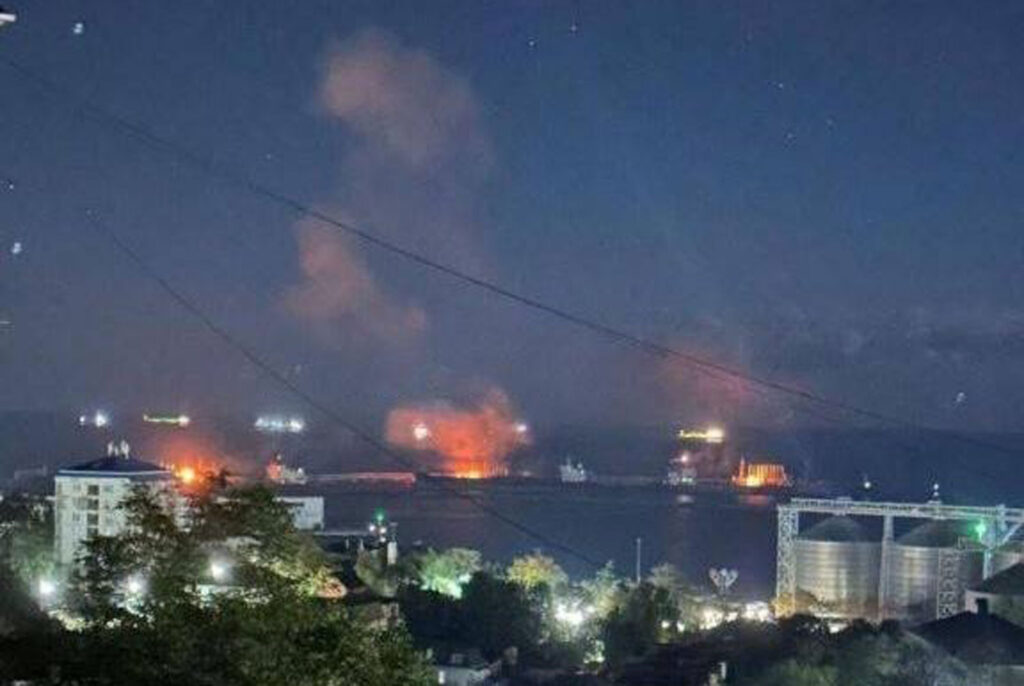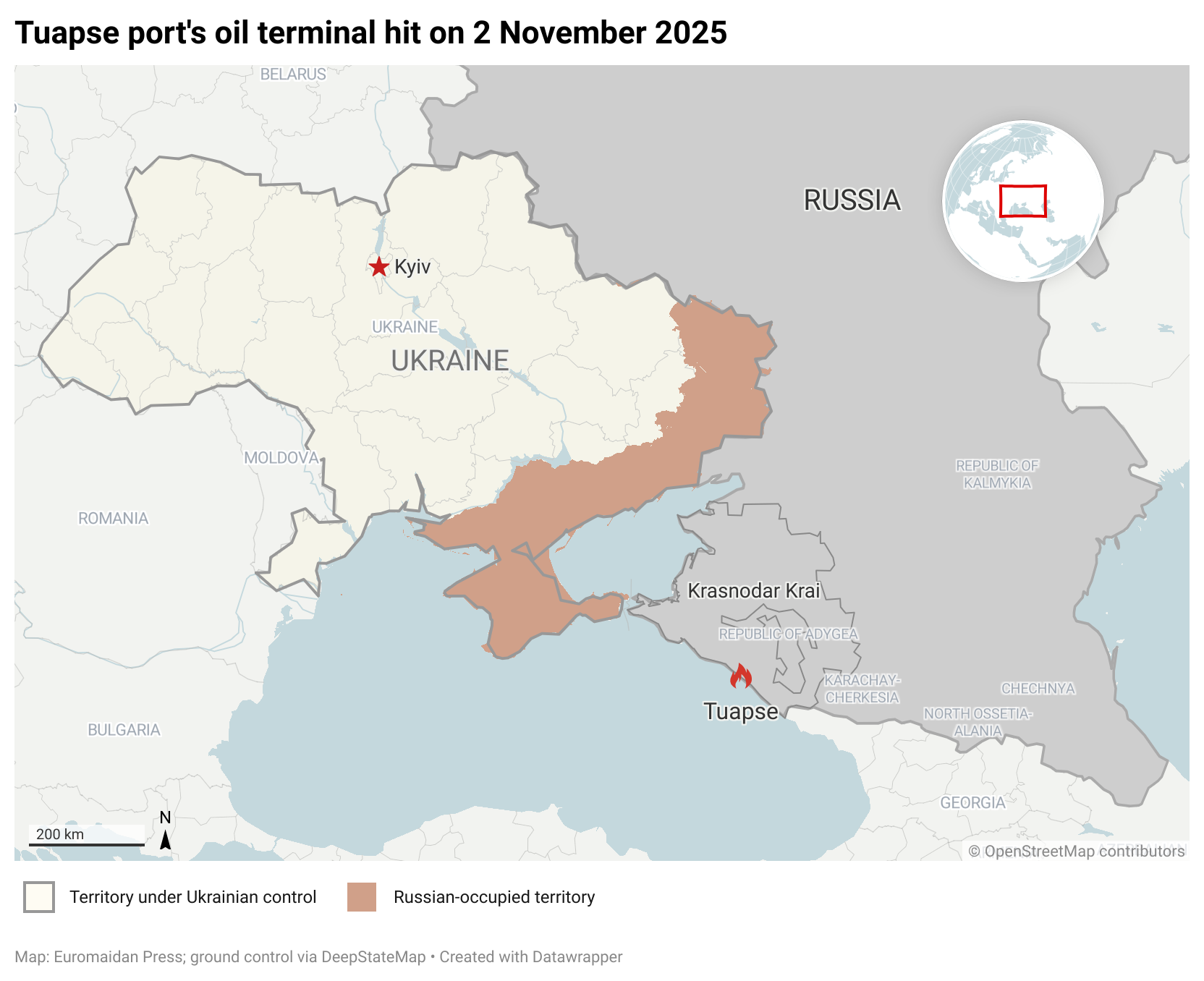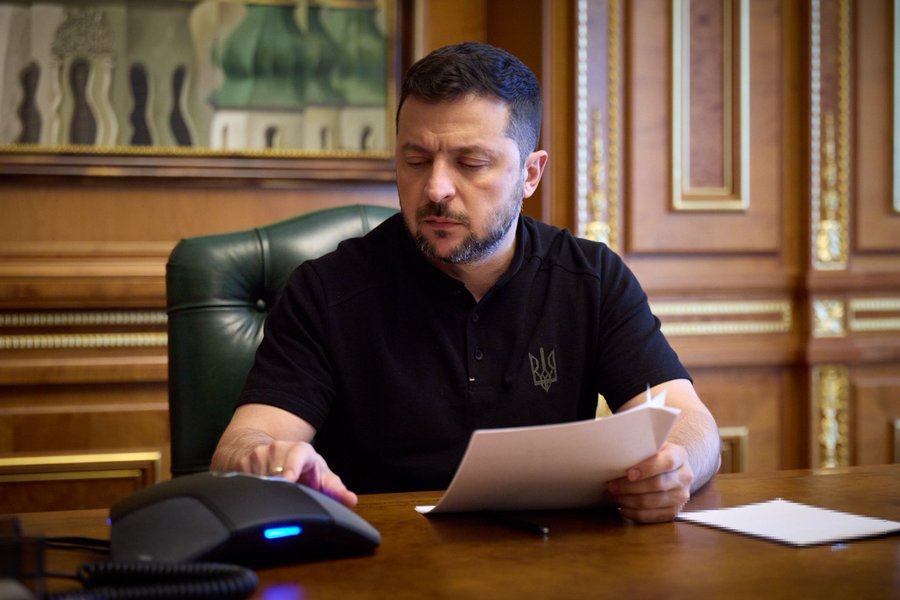Flames light up Tuapse Bay as Ukrainian drones target Russia’s Black Sea oil terminal again

In the early hours of 2 November 2025, Ukrainian drones struck Russia’s Tuapse port, setting a tanker and key oil infrastructure ablaze. Militarnyi reports that the attack targeted a terminal directly tied to the Tuapse oil refinery. Footage from the scene, satellite and OSINT data confirmed widespread fires, while Russian officials later admitted damage to the port's facilities. The terminal, known as the “oil pier” of the Tuapse refinery, is designed for loading petroleum products onto tankers.
This is not the first time Ukraine has targeted Tuapse. At the end of September, a Ukrainian naval drone attacked the port’s oil infrastructure for the first time, hitting one of the oil-loading piers. Earlier, aerial drones targeted the Tuapse oil refinery several times.
Explosions rock Krasnodar Krai as port burns
According to the Russian news Telegram channel Astra, residents of Krasnodar Krai reported a “large number of explosions” overnight. The regional operational command later confirmed a drone attack, stating that “port infrastructure was damaged with subsequent ignition.” They later added that a tanker and an oil terminal were hit during the assault.
At least three separate fires erupted in the Tuapse seaport area. Astra’s OSINT analysts identified two fires on the deepwater pier complex of RN-Tuapse Marine Terminal LLC and another at an oil-loading pier near the Southern Mole. A possible fourth fire was noted on a dry bulk cargo pier, but lacked confirmed evidence.

Ukrainian OSINT group Cyberboroshno confirmed these reports, saying that a deep-water berth and, likely, an oil-loading pier were hit. Analysts noted that the strike appeared to hit the central cargo trestle, the main node transferring fuel from shore tanks to moored tankers.

Ukrainian Telegram channel Supernova+ shared satellite heatmaps from NASA FIRMS, concluding that they indicate active fires near piers 3 and 4. The port handles both domestic and export flows of diesel, gasoline, fuel oil, and other products.
Turkish tanker likely among targets as second Tuapse strike confirmed
Andrii Klymenko, head of the Institute for Strategic Black Sea Studies, stated that three tankers were docked near the terminal during the strike — two Greek-flagged vessels (POLLUX and COAST BUSTER) and one Turkish (CHAI). The fire reportedly broke out on CHAI.
Russia claims massive drone interception
Russia’s Defense Ministry claimed its air defenses intercepted or destroyed 39 drones over the Black Sea and 32 over Krasnodar Krai, with a claimed total of 164.

